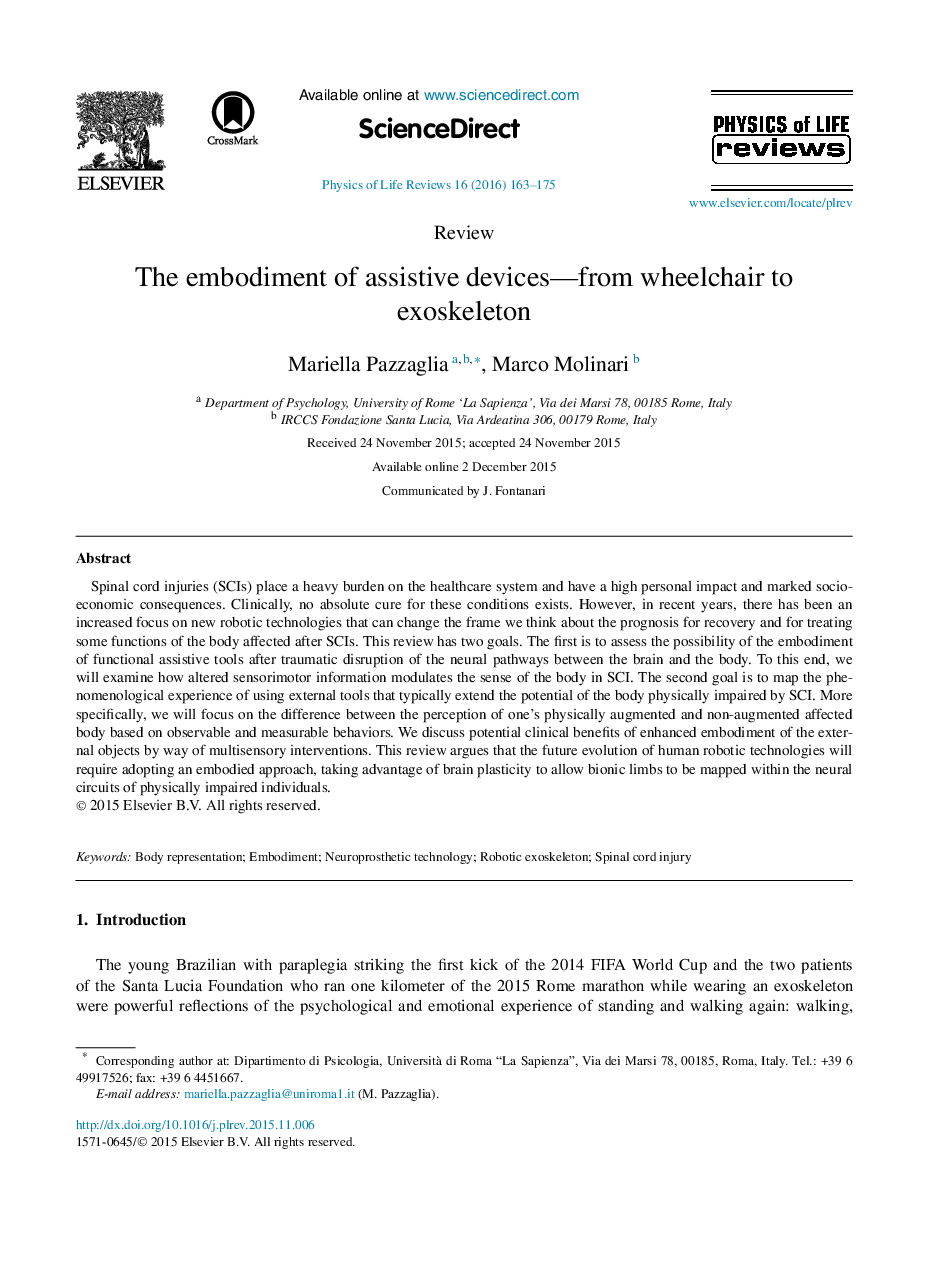| کد مقاله | کد نشریه | سال انتشار | مقاله انگلیسی | نسخه تمام متن |
|---|---|---|---|---|
| 1874138 | 1530886 | 2016 | 13 صفحه PDF | دانلود رایگان |
• Spinal cord injuries have marked personal and socio-economic impact.
• Disturbed brain–body neural signaling changes body representation in the brain.
• Prostheses can restore, enhance, or assist functionality by extending the body.
• Functional prostheses can become represented in the body schema.
• Understanding body representation can be exploited for human robotic technology.
Spinal cord injuries (SCIs) place a heavy burden on the healthcare system and have a high personal impact and marked socio-economic consequences. Clinically, no absolute cure for these conditions exists. However, in recent years, there has been an increased focus on new robotic technologies that can change the frame we think about the prognosis for recovery and for treating some functions of the body affected after SCIs. This review has two goals. The first is to assess the possibility of the embodiment of functional assistive tools after traumatic disruption of the neural pathways between the brain and the body. To this end, we will examine how altered sensorimotor information modulates the sense of the body in SCI. The second goal is to map the phenomenological experience of using external tools that typically extend the potential of the body physically impaired by SCI. More specifically, we will focus on the difference between the perception of one's physically augmented and non-augmented affected body based on observable and measurable behaviors. We discuss potential clinical benefits of enhanced embodiment of the external objects by way of multisensory interventions. This review argues that the future evolution of human robotic technologies will require adopting an embodied approach, taking advantage of brain plasticity to allow bionic limbs to be mapped within the neural circuits of physically impaired individuals.
Journal: Physics of Life Reviews - Volume 16, March 2016, Pages 163–175
